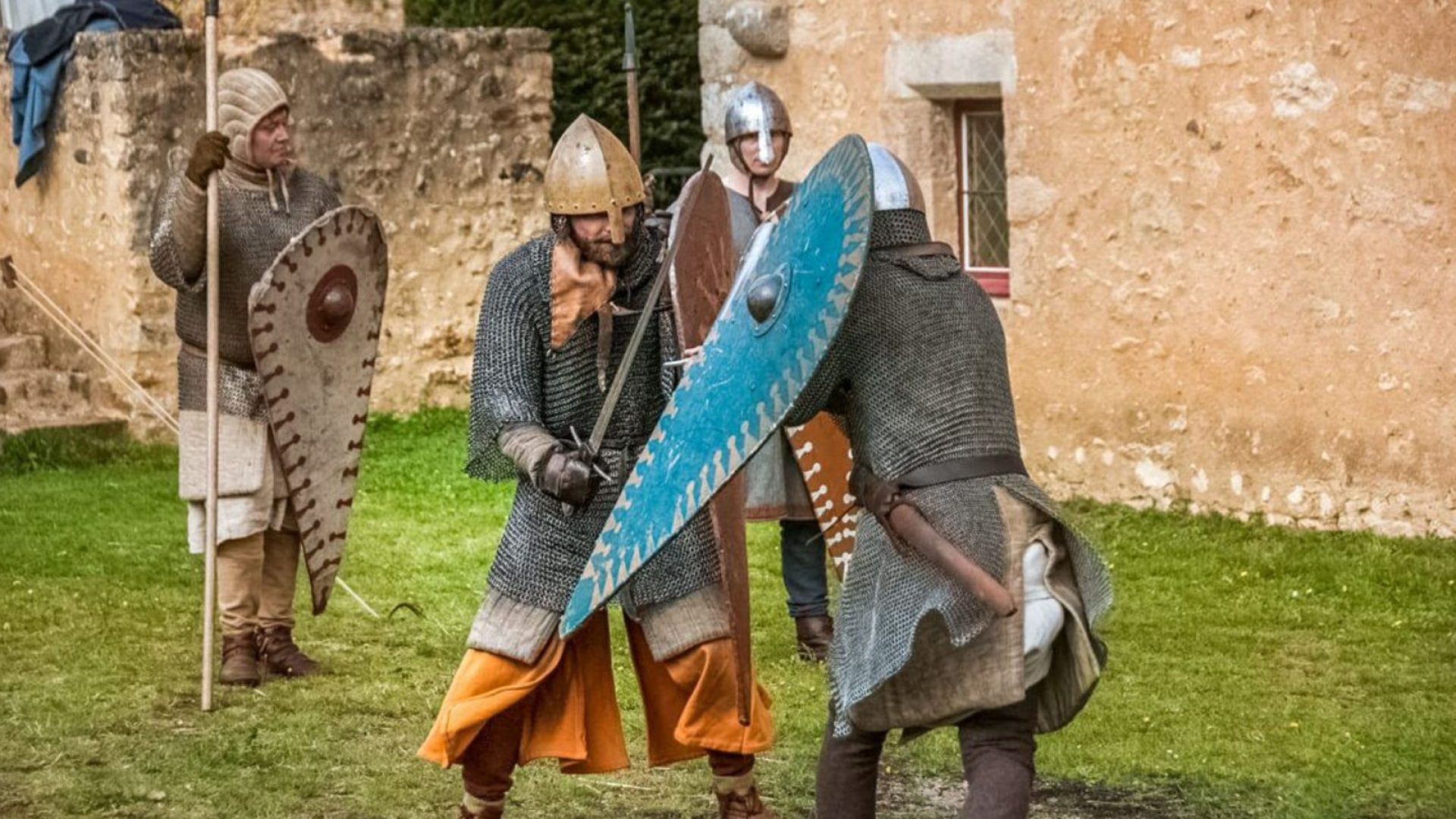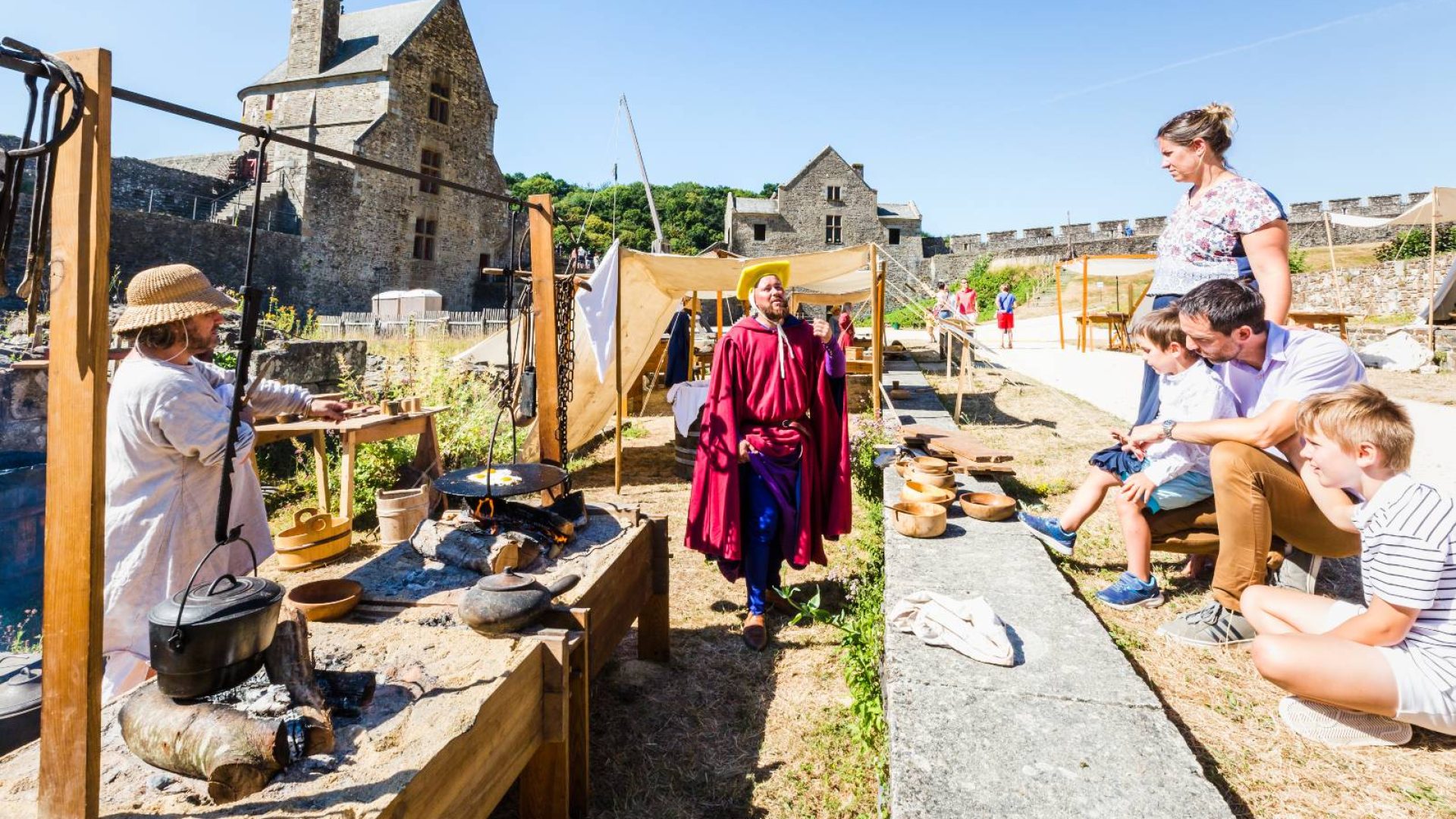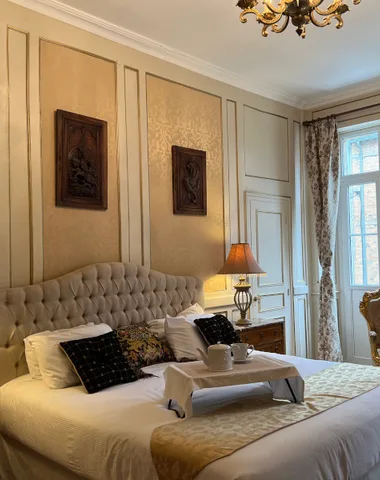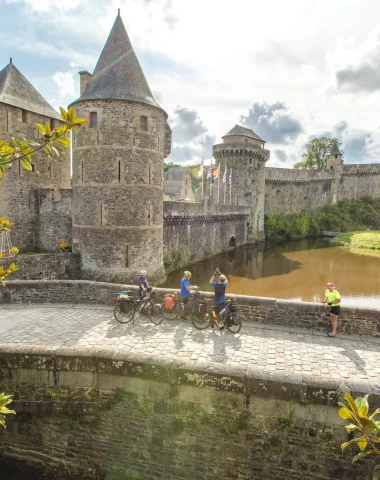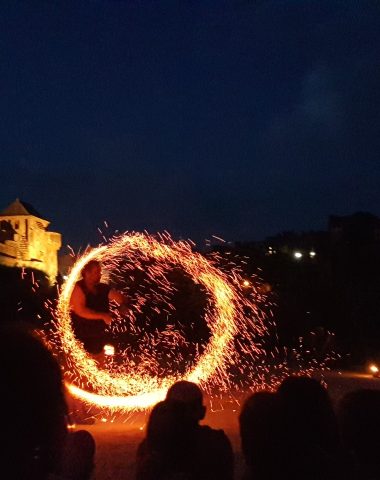Between the Château de Fougères, the Belfry, the churches and the bell tower with a remarkable view, a whole medieval district opens up to you. Step back in time to discover more than a thousand years of history.
Fougères, a thousand years of history at the gateway to Brittany
At the end of the 10th century, at the bottom of the Nançon Valley, on a rocky islet, enclosed between the marshes, a simple wooden dungeon has been installed. In 1166, it was destroyed by the English King Henry II Plantagenet. Raoul II immediately rebuilt a stone fortress. His defenses adapted (eleven towers, ditch, battlements, machicolations, loopholes, merlons, curtain walls and walkway) and improved over 400 years make Fougeres Castle a great book of history and architecture military. The castle remains today in its configuration roughly as it was in the second half of the 15th century.
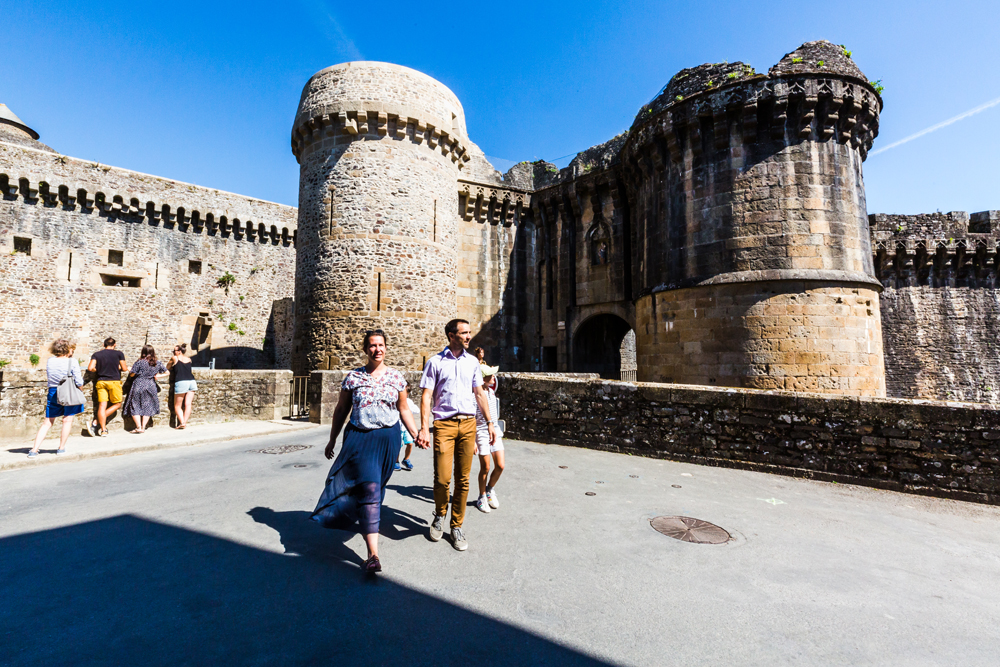

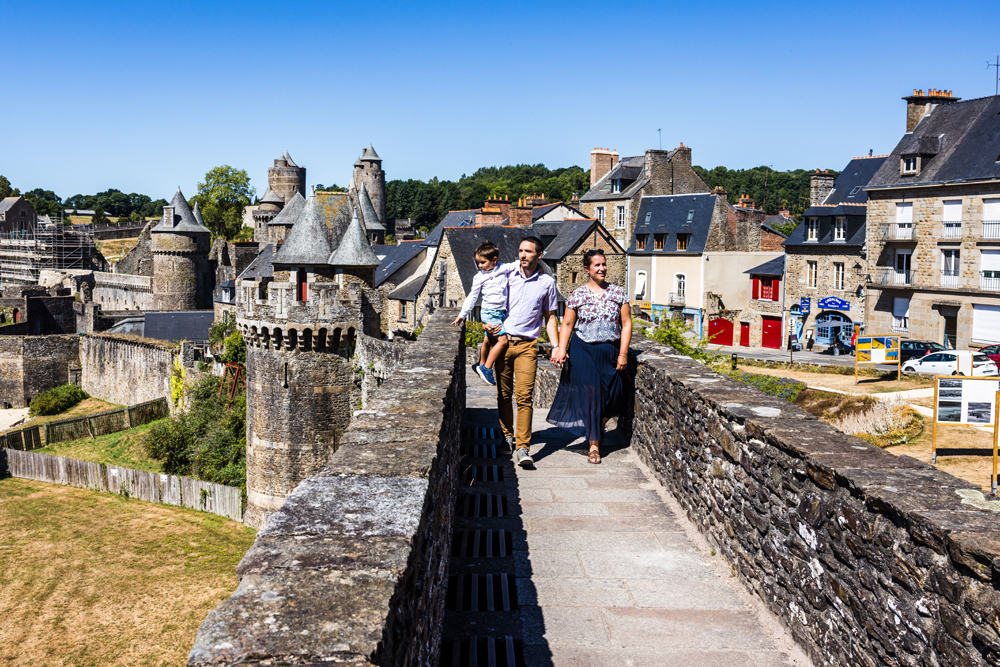
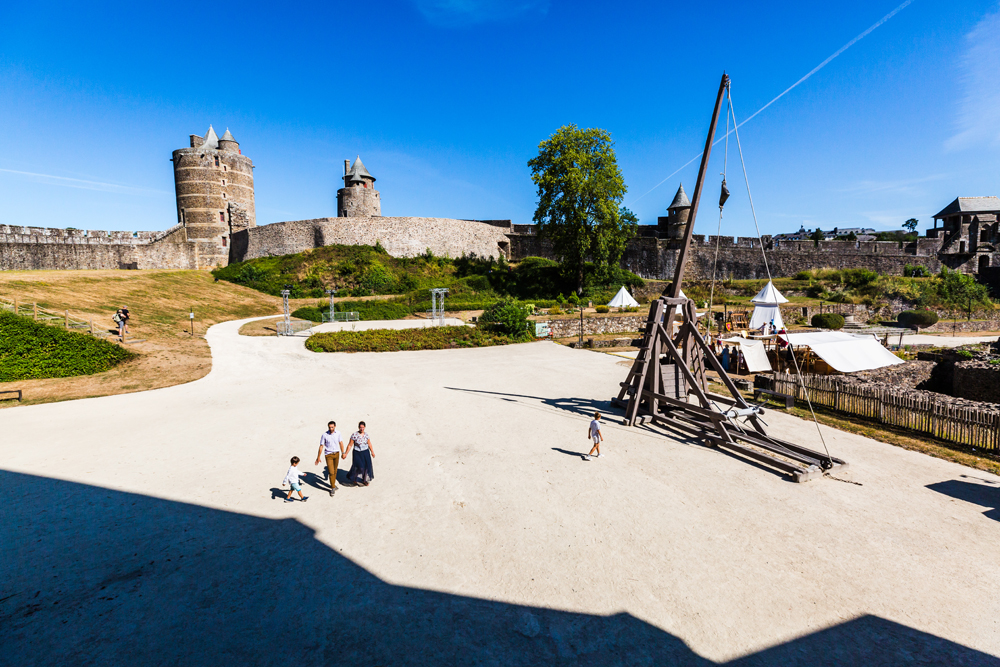
Its plan is presented as a traditional organization of medieval defenses in three speakers :
- the first speaker (or advanced) should filter the inputs.
- the second, called barnyard, is an area where daily life is organized in times of peace and which serves as a refuge for the population in times of war.
- the third enclosure, the reduced, dominates the whole. It is the best defended space, supposed to shelter the keep from where one controls the whole of the castle.
I saw the wooden castle of my ancestors reduced to ashes by the English. Obstinate, committed, I asked for it to be rebuilt in stone this time! The first stones of a future fortress.
The central place of Fougères: its Castle
Fougères owes its origin to its imposing Chateau, installed more than a thousand years ago on a rocky outcrop surrounded by the waters of the Nançon River which acted as a natural moat. It is made up of two towns: the Lower Town, surrounding the castle and theChurch of Saint-Sulpice, on the right bank of the Nançon stream; and the Ville Haute, on the left bank of this stream, with theSt. Leonard's Church,Hôtel de Ville et the Belfry.
Today, each tower has a small name; among my favorite places: the basements of the Raoul and Surienne towers; the passage between the Coigny and Coetlogon towers, which dates precisely from the time of Raoul II!
Medieval life in Fougères
La fortress is surrounded during the history of a belt of ramparts and 11 towers in order to ensure the safety of the inhabitants of the High City which, independent militarily, also build a court and a Hôtel-de-Ville to acquire administrative and judicial power. This autonomy will also result in the erection of the Belfry in 1397.
Fougères, city besieged by the English
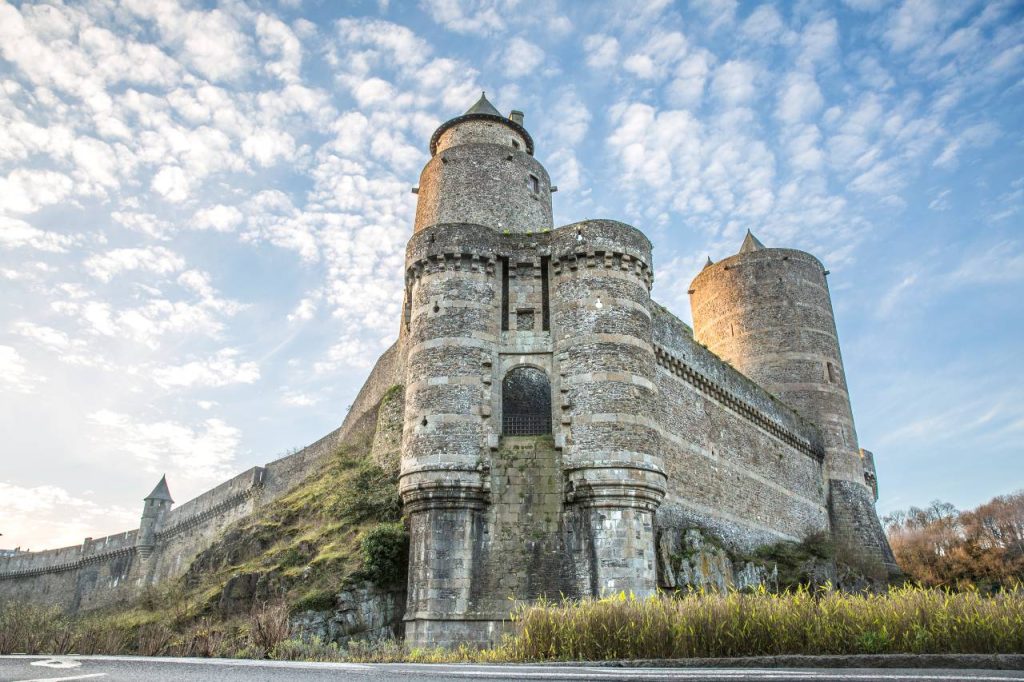
Until its attachment to France in 1448, Fougères fell prey to the Wars of Succession. In turn, English and French seize it.
In 116, Fougères was besieged by Henry II of England, who ruined the castle. The latter was rebuilt in 1173 in stone by Raoul II de Fougères.
On the night of March 23 to 24, 1449, Francis of Surienne, a Spaniard in the service of England, seizes the city and the castle by surprise. After a 2-month siege orchestrated by Breton troops commanded by Prince Pierre, brother of the Duke, the English surrender and leave Fougères.
In the XNUMXth century, successive fires destroyed the intramural center which was later rebuilt in granite.
The oldest Belfry of Brittany is in Fougères
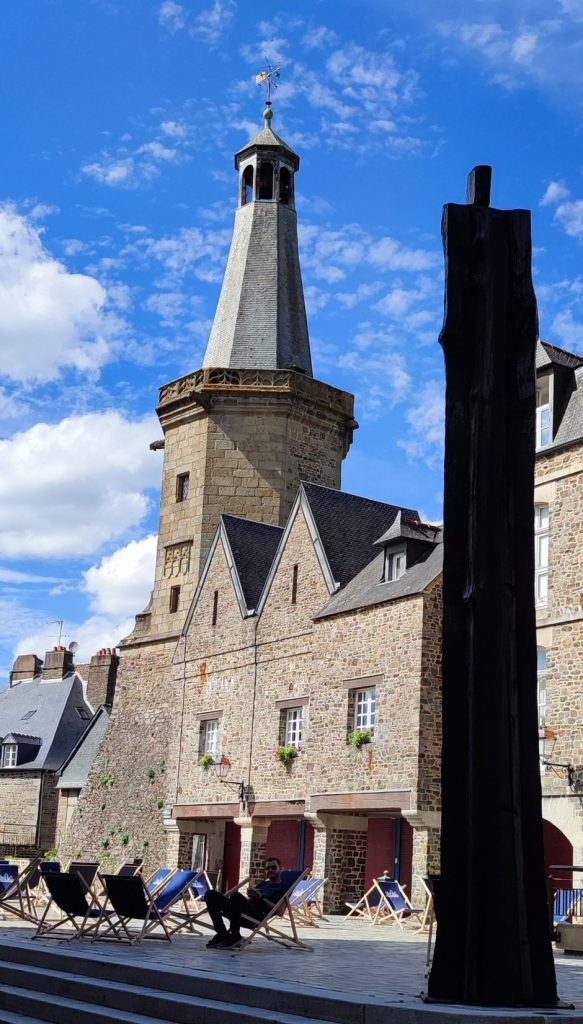
Symbol of the wealth of commercial exchanges with distant regions, the first Belfry of Brittany was erected by the bourgeois of the city in 1397. Its architecture is inspired by the Flemish models that the drapers of Fougères discovered during their travels in Flanders. On the bell is engraved the inscription: "In 1397 the towns of Fougères made me and called me Roland Chapelle".
THEflamboyant church of Saint-Léonard

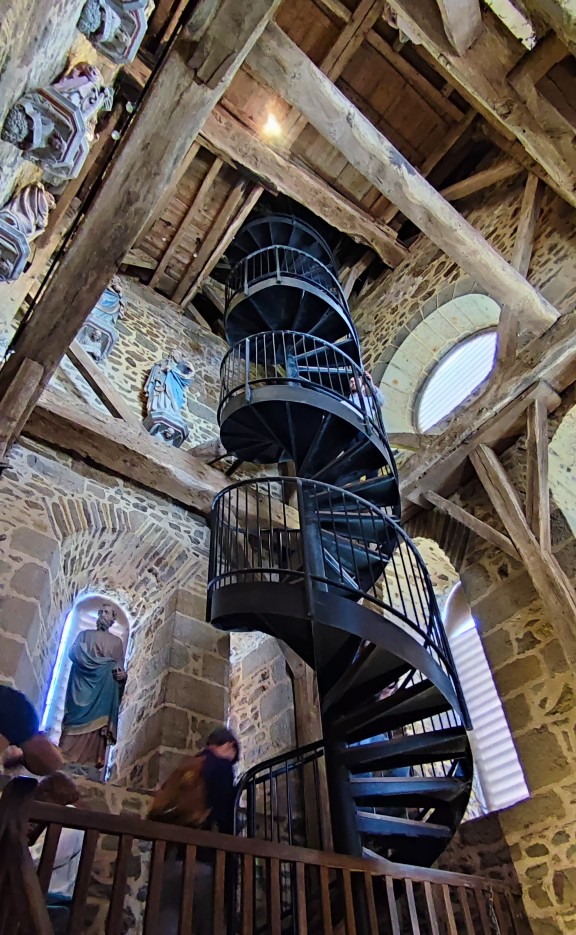
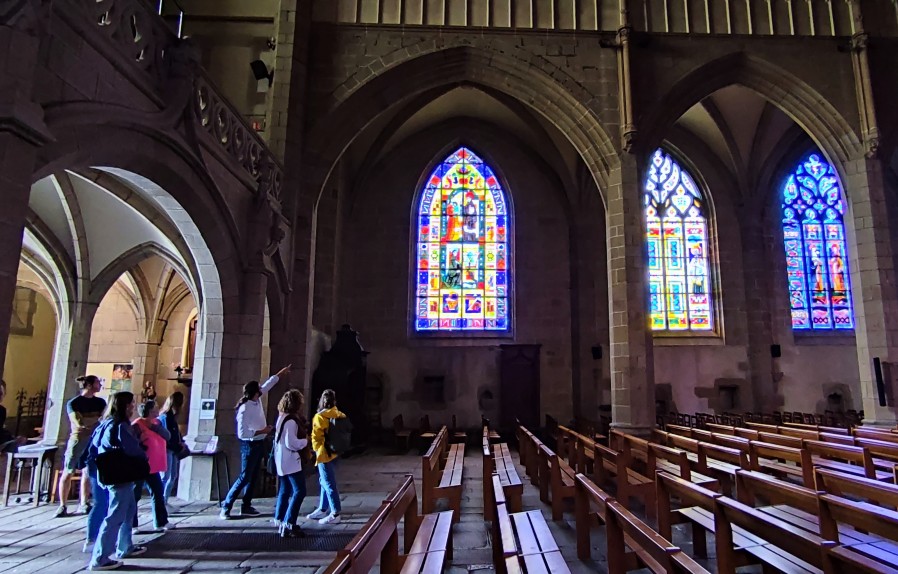
Founded in the XNUMXth century, rebuilt in the XNUMXth and XNUMXth centuries, theSt. Leonard's Church was disoriented and enlarged in the XNUMXth century and equipped with a portal and a rose window six meters in diameter Flamboyant Gothic style.
Outside, you can admire the north façade with its balusters and curious gargoyles.
The south chapel houses the oldest stained glass window (XNUMXth century) in Brittany and which comes from the abbey of Saint-Denis near Paris and the Assumption, a painting by Achille Dévéria from 1835. The north chapel has a painting by Eugène Dévéria (XNUMXth century). The Dévéria brothers were friends of Victor Hugo.
Oh that's high! A steeple above the rooftops
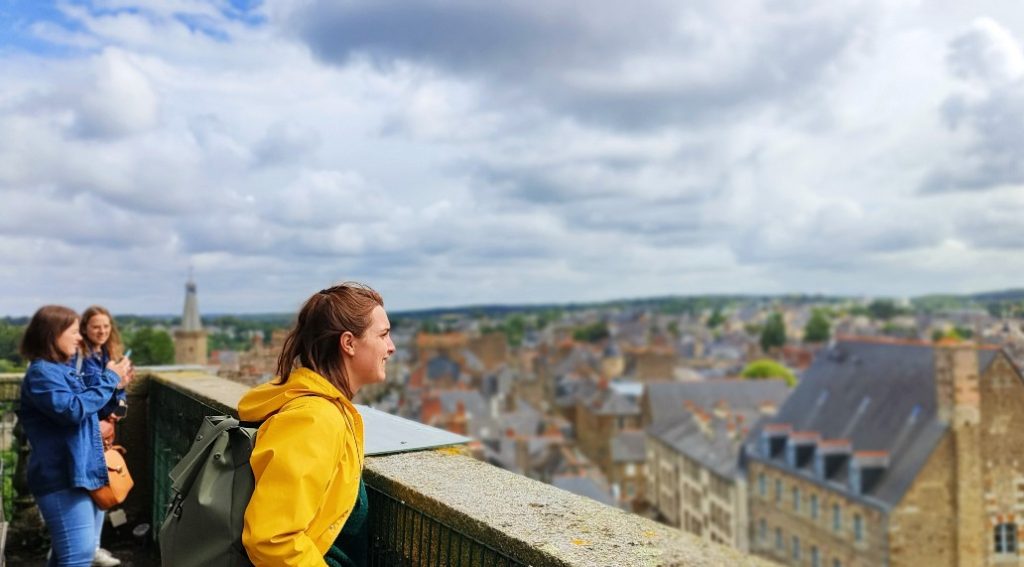
Don't miss the church tower Saint-Léonard which can be visited in summer. The visit begins with a first stone staircase typical of medieval times, and continues with a second spiral staircase making you turn your head between the ancient statues displayed on the walls. After this ascent you will reach the balustrade of the Bell Tower where you can discover a amazing panorama on Fougères, its Castle, the City, and if you turn all around the bell tower it is the countryside and the groves that will open up to you.
The Medieval Quarter
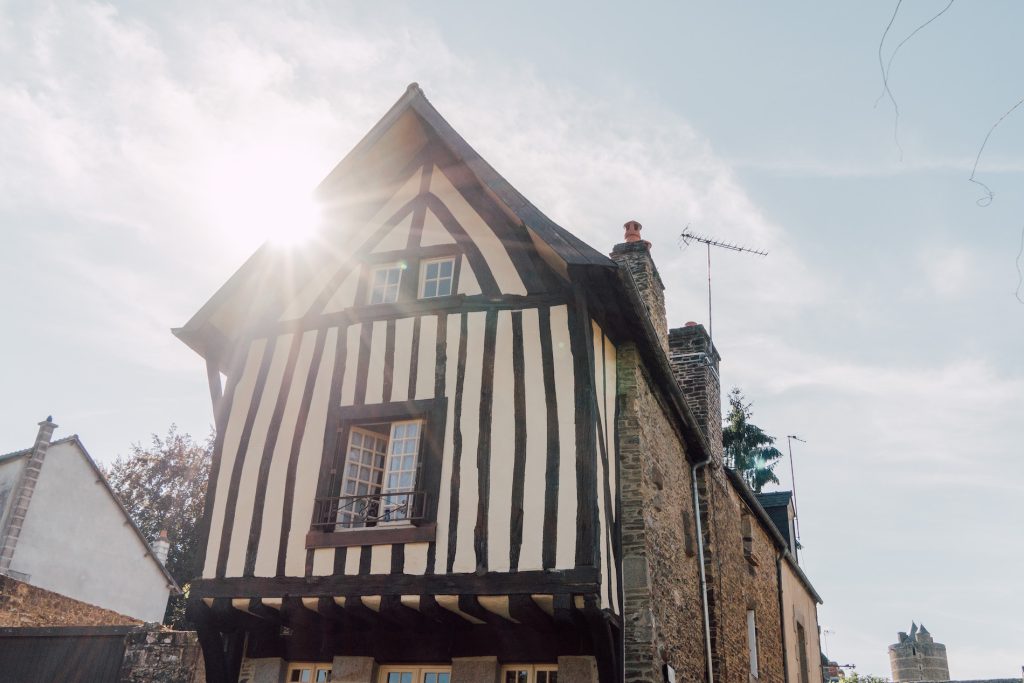
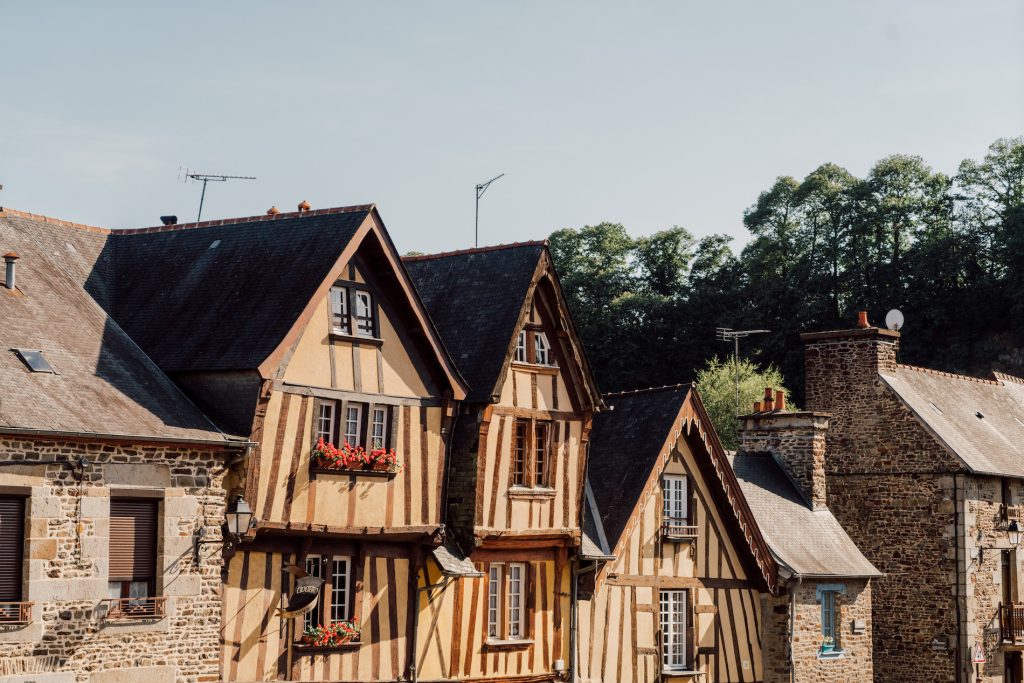
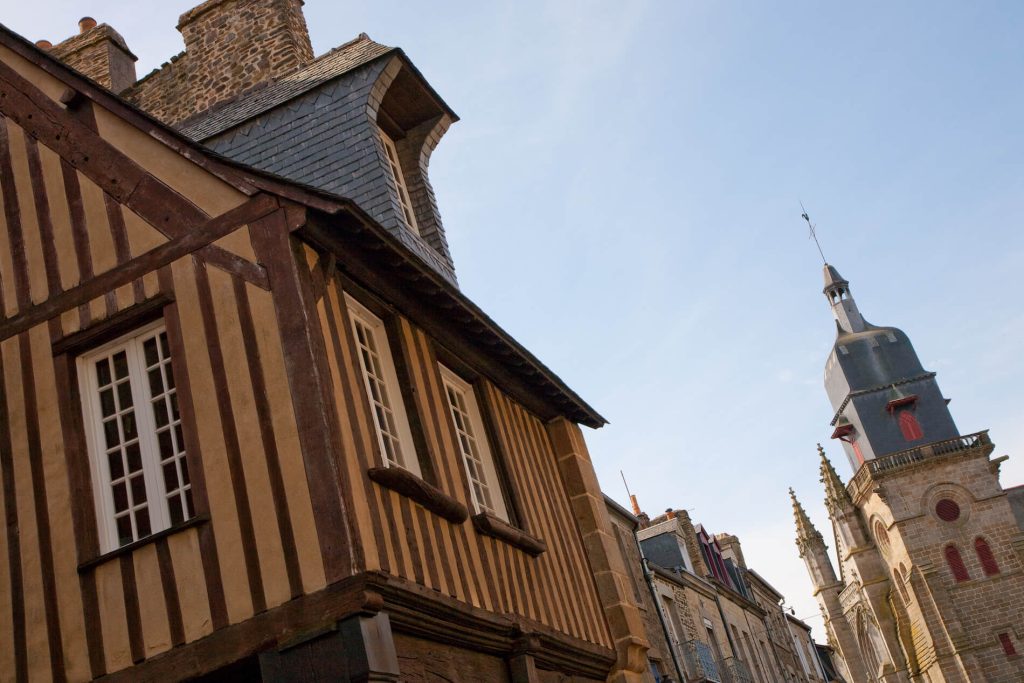
The lower town (or the bourg viel) is the oldest district of Fougères. He is also the only one to have kept his half-timbered houses of the 17th century.
This district was that of the craftsmen: tanners, drapers and dyers who drew water from the Nançon for their activities. The traditional wash house also welcomed the washerwomen who used the ashes of ferns to wash their clothes.
We find these half-timbered houses, notably the House of Savigny (14 and 15th century) on the Place du Marchix, rue de Savigny and rue des Fontaine where the first cattle market was held.
The Church of Saint-Sulpice
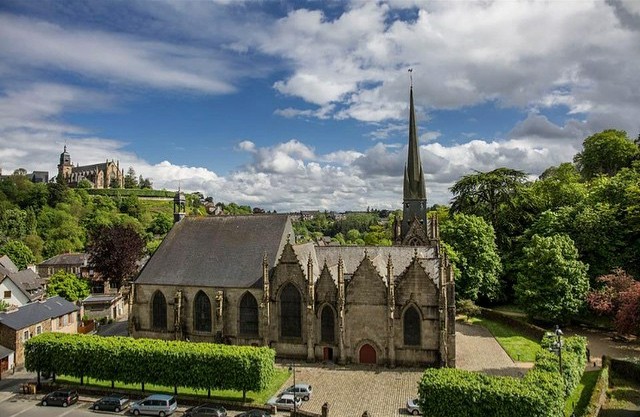
Founded in the 11th century to the south of the castle, rebuilt in the 15th and 16th centuries in a flamboyant Gothic style, completed for the choir in the 18th century, theSt-Sulpice church is one of the richest in Brittany. Inside, you will discover the nave built in the hull of an upturned boat, the 18th century rocaille style choir, the Louis XV woodwork, the medieval granite altarpieces, the 16th century stained glass windows, the work of the master glassmaker from Fougere, Pierre Symon. To the left of the nave, the altarpiece dedicated to Notre Dame des Marais is one of the rare medieval granite altarpieces preserved in Brittany, along with that of the tanners which is located in the mortuary chapel. Outside, the sculptures strike by the fantasy of their inspiration. You will find in particular the gargoyle known as “the Satyr” and the sculpture of the fairy Mélusine above the south door of the church.
La Our Lady of the Marshes statue would come from the primitive castle. When the citadel was taken in 1166, this nursing virgin was thrown by English warriors into the surrounding moat, where she was found in the 14th century.
La Fairy Melusine : the image of the long-haired fairy, her mirror in her hand, adorns one of the stained glass windows of Saint-Sulpice. She gave her name to one of the towers of the castle. According to legend, Melusine killed her father to defend her abused mother. As punishment for her crime, she was condemned to transform her every Saturday into a serpent woman. To keep the secret, she took refuge in an underground passage of the castle. Surprised one day by her husband, she would remain in this hiding place ever since. It is also said that Mélusine flew away with a cry and that at the dawn of great dramas, her howl always resounded above the town of Fougères.
Our Best 5 of Medieval Experiences!
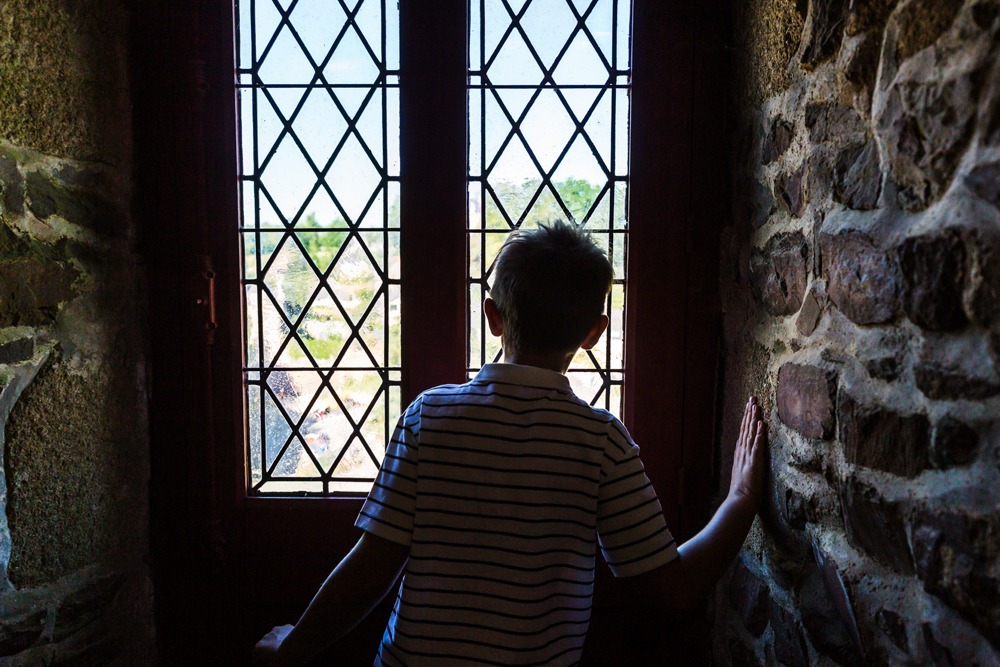
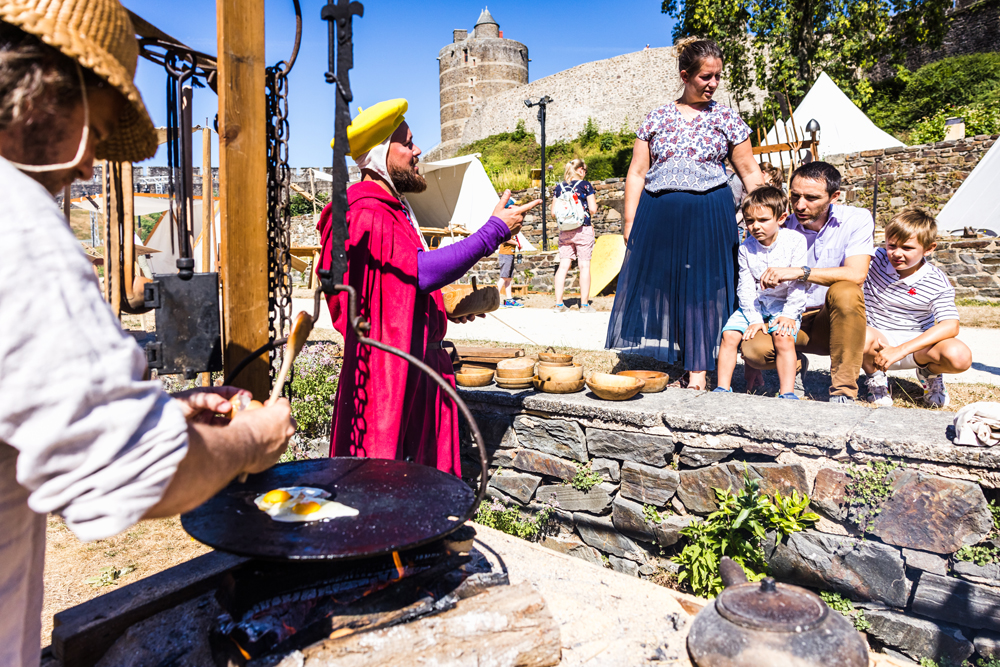
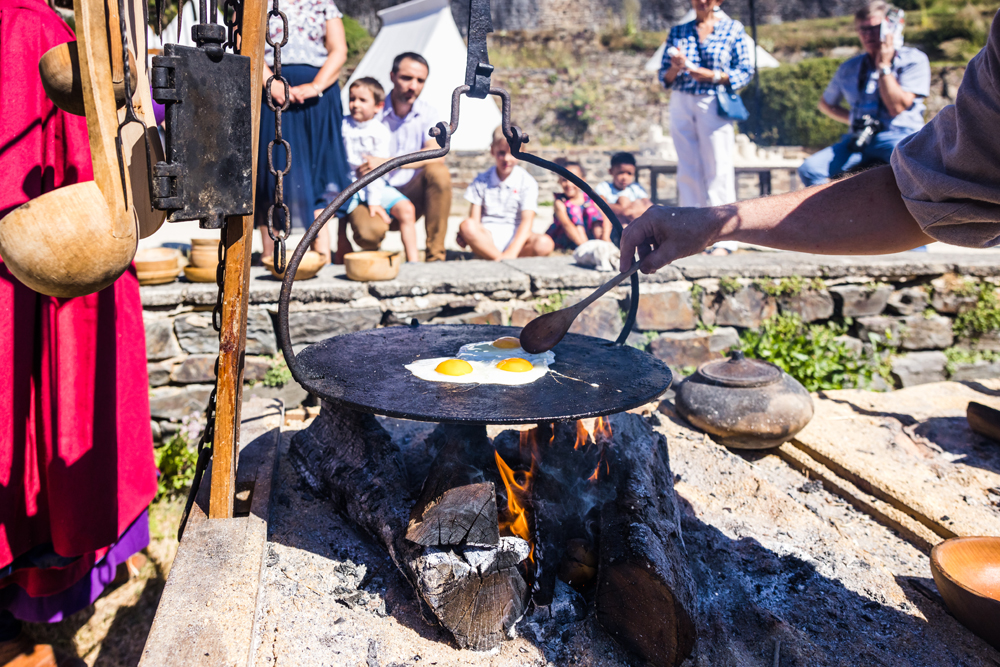
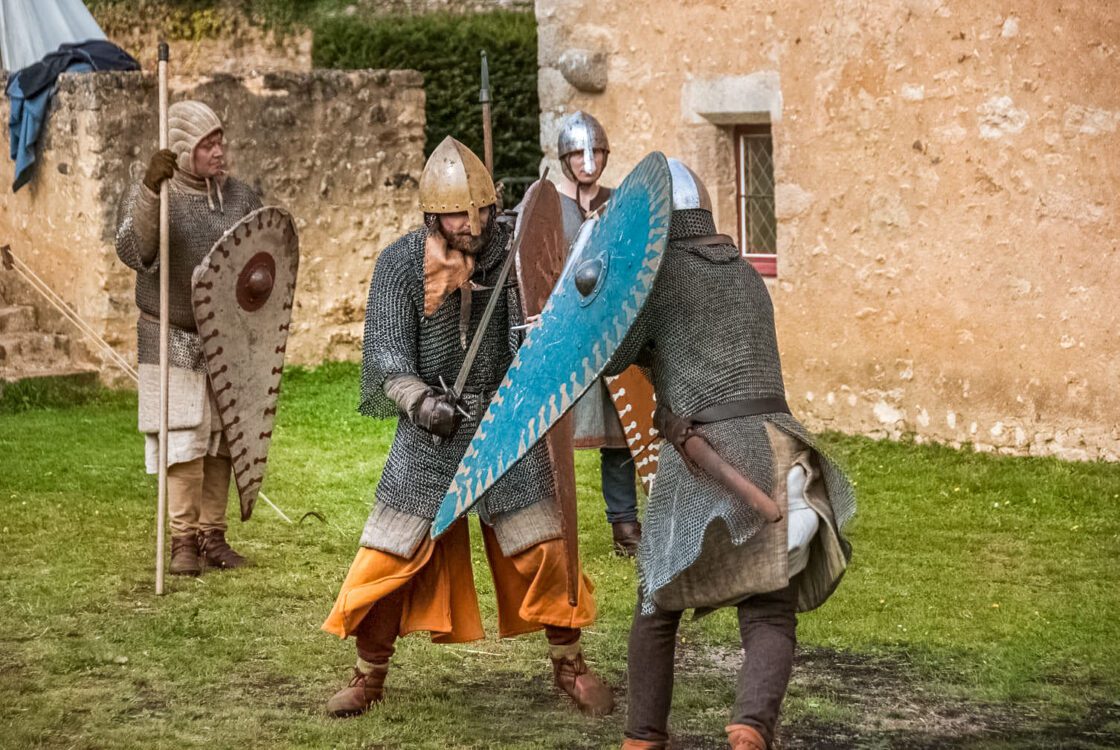
- Climb to the top of the Melusine tower Fougeres Castle
- Admire the the medieval heart of the village since Jardin public
- Climb to the top of the bell tower'St Leonard's Church
- Walk the ramparts Rue de la Pinterie
- Participate in the Medieval Festivals of Crazy Manage

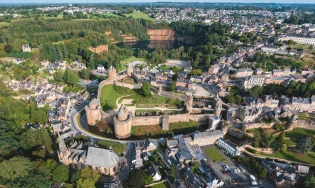



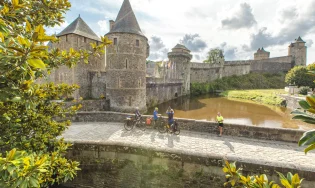








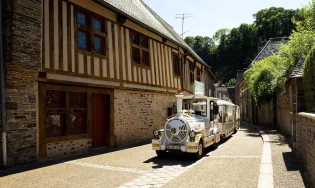
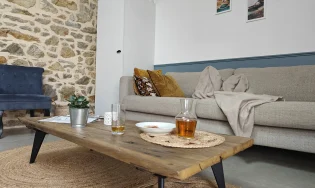

 Groups
Groups

